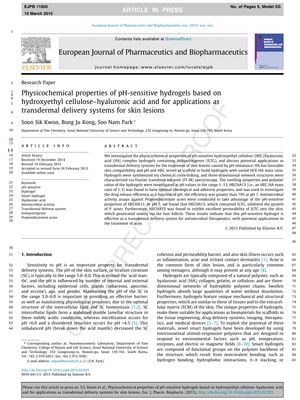Physicochemical Properties of pH-Sensitive Hydrogels Based on Hydroxyethyl Cellulose–Hyaluronic Acid for Transdermal Delivery Systems for Skin Lesions
May 2015
in “
European journal of pharmaceutics and biopharmaceutics
”

TLDR The hydrogel with a 1:3 ratio of hydroxyethyl cellulose to hyaluronic acid is effective for delivering drugs through the skin to treat acne.
The study explored the physicochemical properties of pH-sensitive hydrogels made from hydroxyethyl cellulose (HEC) and hyaluronic acid (HA) containing isoliquiritigenin (ILTG), aiming to use them for transdermal delivery to treat skin lesions. The hydrogels, with varying HEC:HA mass ratios, were synthesized and characterized, revealing that a 1:3 ratio (HECHA13) had the best rheological and adhesive properties. HECHA13 showed over 70% drug release efficiency at pH 7 and demonstrated antimicrobial activity against Propionibacterium acnes, particularly at pH 7. Additionally, HECHA13 exhibited excellent skin permeability, mostly through hair follicles. These findings suggest that the hydrogel could be an effective transdermal delivery system for antimicrobial treatments, especially for acne.





